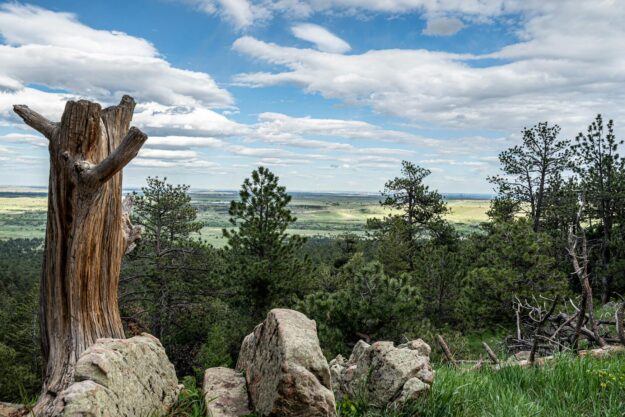Widgetized Section
Go to Admin » Appearance » Widgets » and move Gabfire Widget: Social into that MastheadOverlay zone
How to stay safe on your hike in Rocky Mountain National Park

Rocky Mountain National Park is a hiker’s paradise. There are snow-capped peaks, sparkling alpine lakes, and that crisp mountain air that makes you feel more alive with every breath. It’s no wonder people from all over the world flock here for a taste of the wild.
But for all its beauty, the park is still very much untamed. The same elements that make it magical can also be risky if you’re not prepared.
Here, we’ll share a few things you must watch out for while hiking in Rocky Mountain National Park. That way, you can enjoy the hike and make it back with nothing but great stories and a camera roll full of views.
#1 Go Slow Or You Might Experience Altitude Sickness
Rocky Mountain National Park sits at a very high elevation. Most trails begin above 7,800 feet. Even gateway towns like Estes Park are at 7,522 feet, and Grand Lake is at 8,359 feet.
As elevation increases, the air contains less oxygen. At 12,183 feet, there is 35% less oxygen than at sea level. This change can significantly affect the human body.
A lack of oxygen in the body leads to altitude sickness, also known as acute mountain sickness (AMS). Approximately 20% of visitors traveling from sea level to over 8,000 feet experience symptoms.
The most common symptom is a headache. You might also feel tired, dizzy, or lightheaded. Nausea, vomiting, or a rapid heartbeat can happen too.
To prevent altitude sickness, going slow is your number one rule. Do not rush up to high altitudes. Experts say to ascend no more than 1,640 feet per day above 8,000 feet.
Another simple yet powerful strategy is to drink tons of water. Staying well-hydrated can help prevent symptoms and support your body’s adaptation to lower oxygen.
It is also wise to skip the booze for your first few days, as alcohol can cause dehydration.
#2 Check for Weather Forecast Before Heading Out
The weather in Rocky Mountain National Park can change in a flash. Don’t be surprised to experience rain, sun, hail, wind, and snow all in one day, even in the height of summer.
Take a quick look at the weather forecast before heading out. Knowing what is coming helps you pack smart and plan your day. The National Weather Service is your go-to source for the most accurate forecasts.
When packing, layers are your golden rule for clothing. Wear moisture-wicking fabrics, and avoid cotton, as it stays wet and can make you cold. Bring a warm hat, gloves, and a windproof/waterproof jacket.
Don’t forget to pack a mask like an N95 or P100, especially if you have asthma. That is because the air of Colorado contains several toxins.
One of them is particularly dangerous, and that is ethylene oxide—a colorless, flammable gas used as a raw material for other chemicals. TorHoerman Law reports that inhaling this gas can increase the risk of breast cancer, Hodgkin lymphoma, and multiple myeloma.
Numerous ethylene oxide lawsuits have been filed against companies that operate this gas-emitting facility.
Wearing a mask can filter out these harmful particles. Also, try hiking during the day as the air quality is better at that time.
#3 Admire Wildlife From Afar
Over sixty mammal species reside in Rocky Mountain National Park. You might spot majestic elk, moose, bighorn sheep, or black bears, especially early mornings and dusk.
However, you must not forget that these are wild animals, even if they look cute and gentle. They can act aggressively if they feel provoked or threatened.
Keep your distance from them. For most wildlife, a distance of at least 75 feet is recommended. But you must maintain a distance of 120 feet for larger animals like moose, bears, and mountain lions.
These numbers are just guidelines. Observing the animal’s behavior is more important.
If an animal gets too close, stay calm because panicking will not help. Strictly avoid feeding animals, as this can make them dependent on humans for food. Do not touch or pick up any animal, even if it appears sick or seems to be lost. Throwing objects, yelling, or harassing animals is also prohibited.
Note that food or anything scented attracts animals. Always store food and scented items properly. Use bear canisters or metal lockers in the backcountry.
Rocky Mountain National Park is stunning, no question about it. But it’s also rugged, wild, and unpredictable. You can fully enjoy its wonders if you prepare for the unique challenges of the mountain environment.
Whether you’re on a short day hike to a waterfall or tackling a summit, take these simple precautions seriously. You’ll have a better, safer experience, and you’ll leave with memories instead of mishaps.


